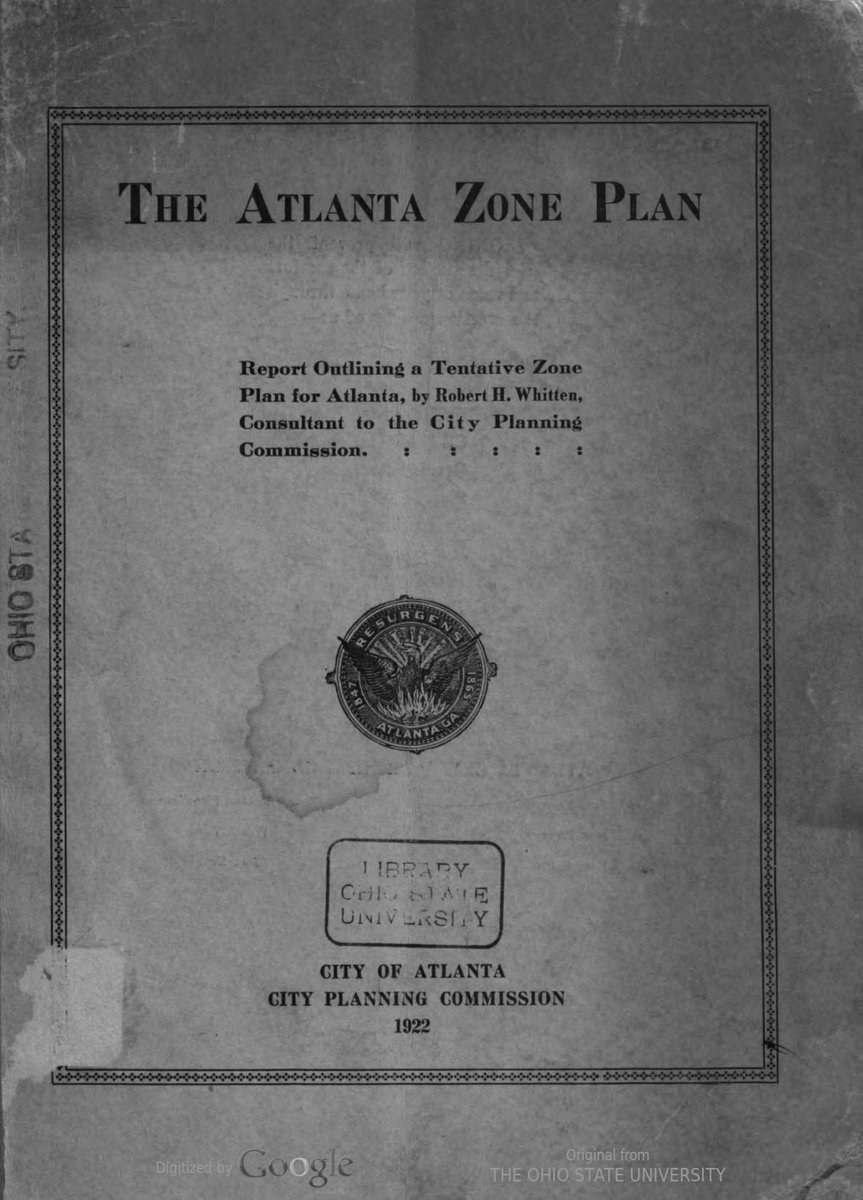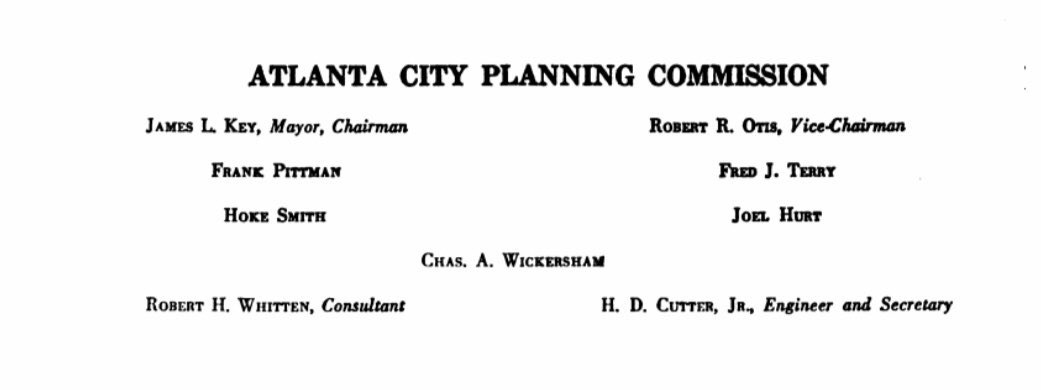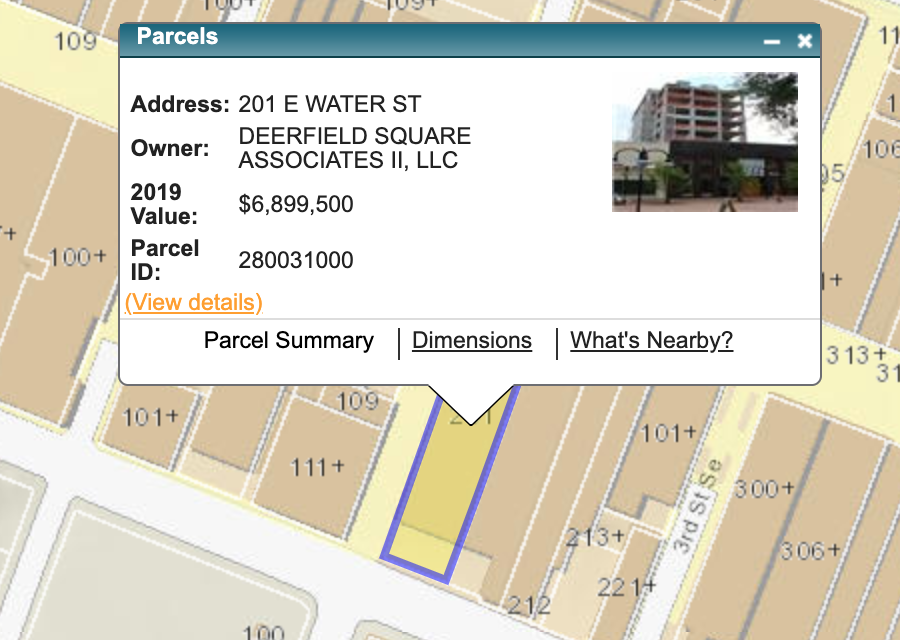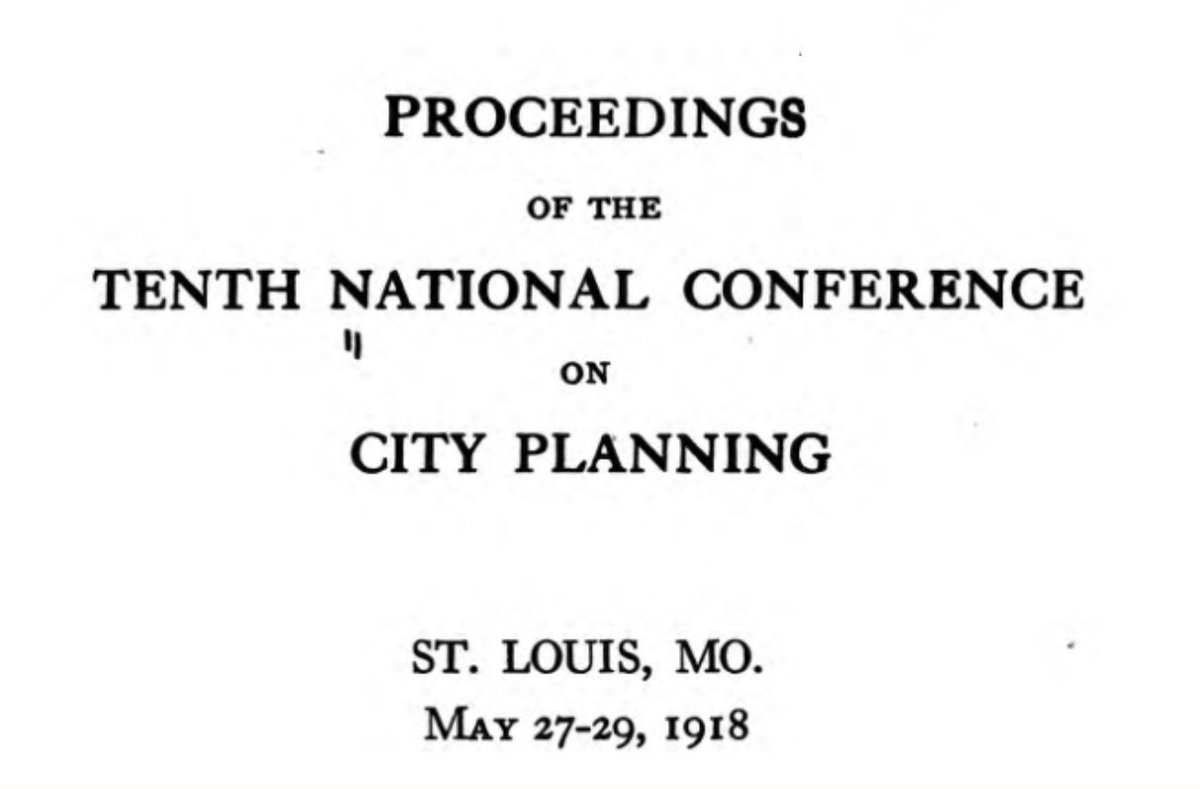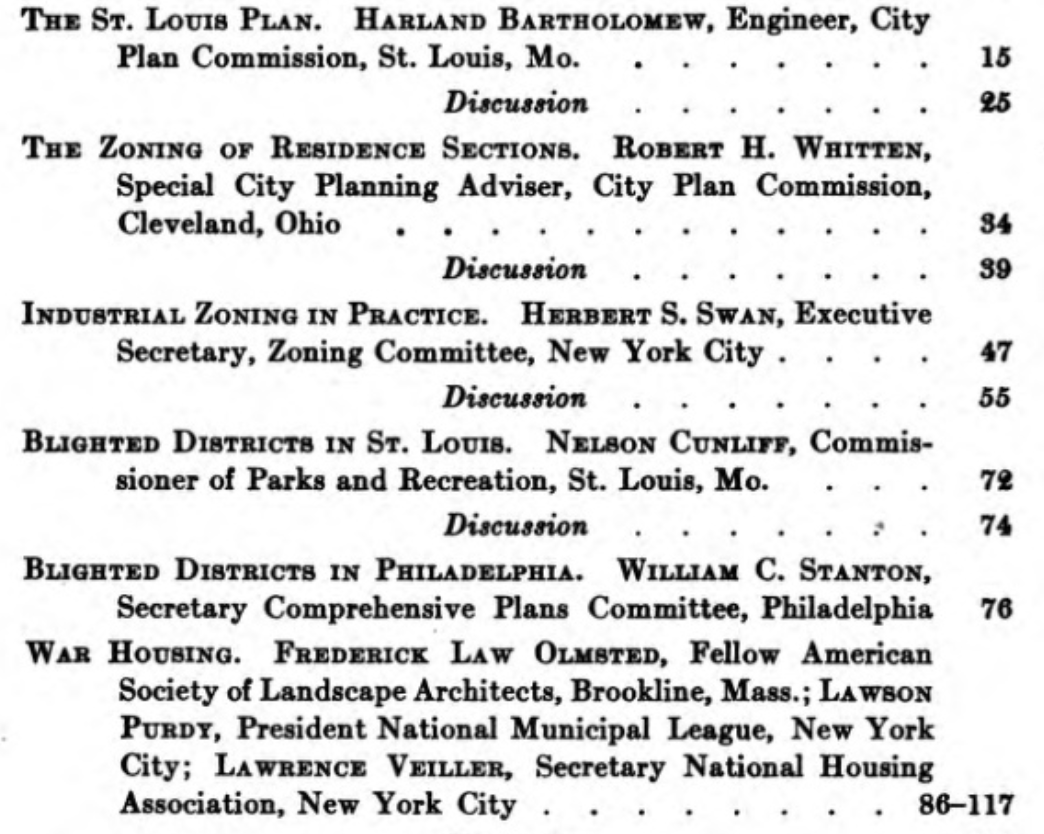There was some interest in my tweeting out the proceedings of the 1918 US City Planning conference after racial zoning was struck down. Was 1917 in Kansas City as exciting? Let's find out! babel.hathitrust.org/cgi/pt?id=hvd.…

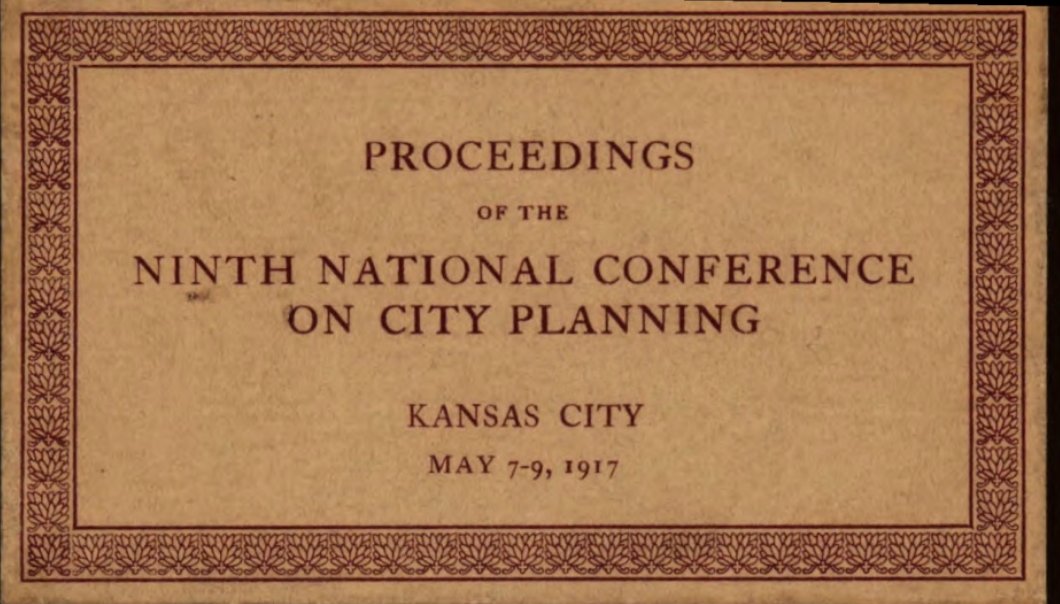
The sands are shifting. Eminent domain is staying the same (this is before Kelo) but the police power (as in police) appears to be growing without limit. Maybe anything goes? Let's find out! 

#suddenlyGeorgist The court opposition to "excess" condemnation is to battle what we call today "value capture", to make sure that all financial benefit from public improvements goes to adjacent private landholders instead of allowing the government to "partly recoup" costs 

The states are battling the courts on this by amending their constitutions to explicitly allow this eminent domain practice to help pay for improvements. To my knowledge the courts win and this is not in practice in the US today but I don't know that story. 

I mixed up Bassett and Bettman. Bassett is also a lawyer crucial to zoning history, but he's from NYC, he wrote their zoning, sometimes called "The Father of American Zoning" and he created the "freeway" and "parkway" concepts, not Moses. en.wikipedia.org/wiki/Edward_Ba…


Bassett is focused on the law around getting land for streets. He wants to use the police power to set aside private land for streets without paying for it, then pay when the city wants it. He doesn't want people building in future roadway. Courts say no, pay for it. 

Shame this is such an ugly page break, it would make a lovely framed picture: "for the police power cannot be invoked for a purely aesthetic purpose". He's talking about setbacks here and the need to tie them to preventing public nuisance for the police power to be valid. 

In 1917 setback requirements forbidding construction on some or all of a private parcel of land are not considered legal in the US without compensation. Bassett lists some possible arguments for why they could be: "decrease the fire hazard...light and air...noise and dust". 

Bassett thinks the court will reverse themselves on this (yes) if localities persist and say the magic words: "such setbacks were for the safety, health, comfort, and general welfare of its inhabitants, and that all property owners were treated substantially alike" 

Bassett notes his thinking is based on the rich trove of billboard litigation that "fill the law books" 

1917: "We can all remember the time when it would have seemed absurd for a city to restrict the height and arrangement of buildings on private property" 

Welch v Swasey is new to me, the 1909 Supreme Court case blessing height regulations en.wikipedia.org/wiki/Welch_v._…


Also new to me is Lachtman v Houghton 1916, where the Minnesota Supreme Court considered whether localities should be able to ban grocery stores and said no cite.case.law/minn/134/226/


Bassett dreams of "villa zones" in cities where "detached house districts" are preserved and "children can play on the earth without going to public playgrounds, where there can be some vegetation, and where there can be an abundance of light and air" 

1917: The world has changed and courts need to be reminded of this in person by experts: "the needs of great present-day communities are larger and more diversified than was the case fifty years ago" 

Bettman vaguely tells a vague story set somewhere where he talked to some people, but his vague story shows there is a need for greater clarity on what planning powers localities have or risk reducing "the enthusiasm" for new planning effort 

After a long speech about constitutions and legal principles, Bettman gets to his point: zoning is constitutional if it based on expert study and comprehensive planning. If it's not, it's not. 

Eubank vs. Richmond 1911 is given an example of how not to do it. Richmond's building setback ordinance "did not represent a careful community plan" supreme.justia.com/cases/federal/…


Frank Stringham from sunny @CityofBerkeley is here to talk about their new single family residential district ordinance, which is "lengthy and probably has some defects" 

Stringham is a new name for me, he is city attorney at Berkeley at this time and will go on to become her mayor and will work to move to a city manager form of government. en.wikipedia.org/wiki/Frank_D._…
Interesting roundup of objections here, including the names of two professorial objectors: "absurd...confiscation...robbery...unwise...would resort to the courts..." 
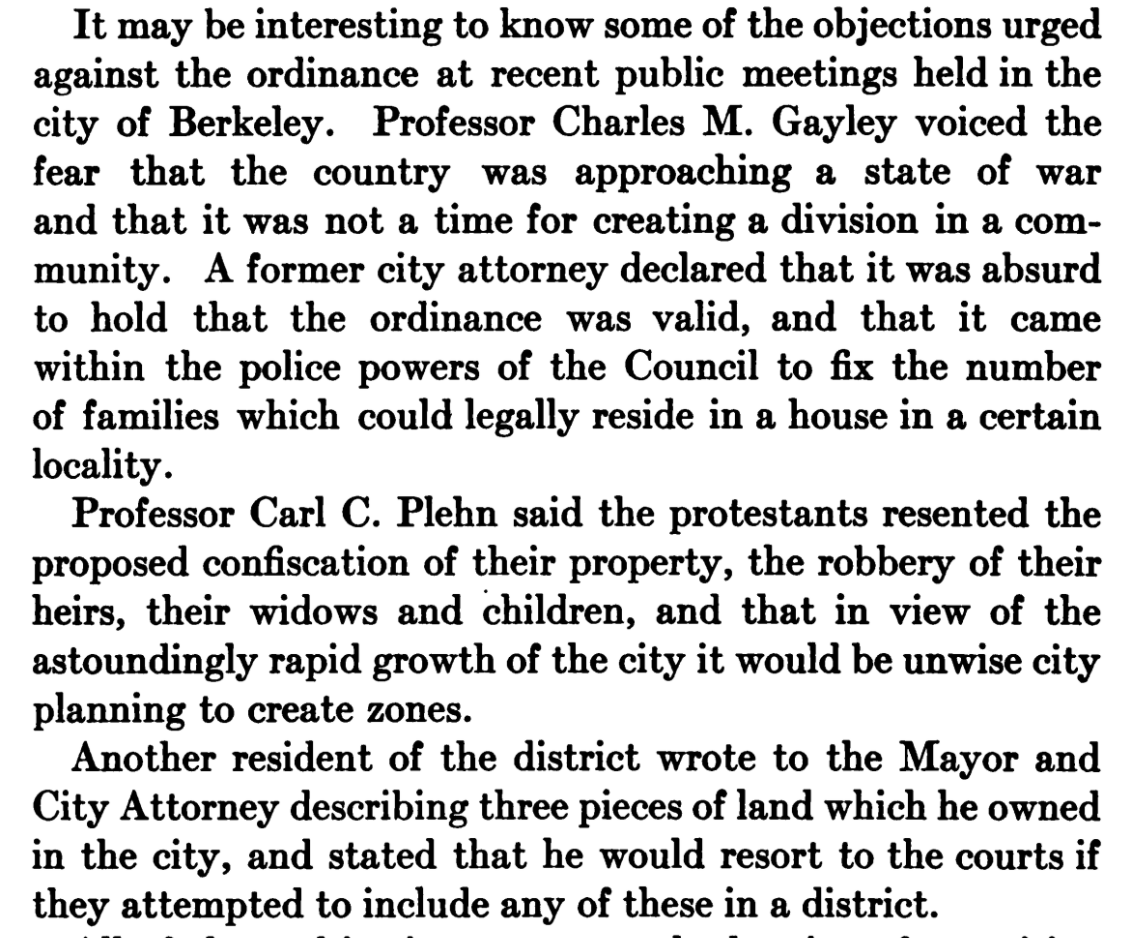
Berkeley is doing everything she can to stay out of the courts, since an "unfavorable decision would do more harm than the limited number of invasions which may occur" 

It's fascinating to me how frank they are that what they're doing would not be upheld by the courts, but also that what they're doing will be used to change how the constitution is interpreted to give localities greater freedom to restrict private land use without compensation 

1917: To understand the perils of unrestrained capitalism, you should look at San Francisco and the Telegraph Hill "slum" (unclear if the feral parrots are there yet) en.wikipedia.org/wiki/Telegraph…


Spaulding Frazer from sunny @CityofNewarkNJ is here to talk about their problems, "the same in character only less in degree" as the one, the only, NYC 

If you trust NYT, he goes on to be a national figure in legal circles, becoming Dean...somewhere...and eventually representing @PANYNJ nytimes.com/1940/03/08/arc…
Frazer thinks the health and safety arguments are essential for zoning regulations to be constitutional. Just leaning on propping up property values is not enough. 👩⚕️👩🚒👮 

Next up we have an absolute mess, which Philadelphia's favorite lawyer Andrew Crawford will attempt to keep tidy: "no papers will be read...all discussion...three minutes" 

Crawford has appeared a few times in this feed, but I haven't found a proper introduction for him and I can't find a useful resource on him online. He appears to have written many books, most recently the @CityMinneapolis Plan archive.org/details/planmi…


Frederick Bigger from sunny Pittsburgh PA has a bone to pick with McFarland, who has "struck a rather sensitive place" in what he calls his mind🧠 

McFarland rips off his shirt screaming "I am principally made up of blood and bone!" and agrees with Bigger "whatever I may have said to the contrary yesterday" 🕊️ 

McFarland does think that utility is necessary for beauty, and takes a swing at poor @thecityofhbg and their "alleged" "consummate works of art" at the capitol. It's City Efficient vs. City Beautiful folks 

McFarland celebrates "the well-developed man"..."a handsome animal"..."an extremely efficient operating machine, and he produces enormously", then flirts with expounding on feminine beauty and settles on "the horse" instead out of respect for "this presence" 

Frederick Law Olmsted (Jr) butts in to explain that it's all much more "complicated" than just beauty and efficiency: "You have to resort to specialists" 

Olmsted thinks that both men are wrong and the two bodies should be separate, one for "unification" and one for "specialization" 

John Nolen talks for a long time, resolving nothing
Crawford sides with President Olmsted, arguing that the Art Jury works on present projects and the Planning Commission on future ones
Charles Moore rises and shares his experiences in DC serving on the National Commission of Fine Arts: "If the problem is solved, the question of beauty usually takes care of itself" 

Change of topic! We're switching to trains, smoke, and property values. Purdy, where do you want to take us? 

With no preparation, Purdy manages to fill time for four pages. I will attempt to summarize.
Page one is all about the before times, when NYC had steam trains "belching smoke" on Park Ave north of Grand Central. It was worst in the open train yard, but even where the train went into the tunnel smoke still poured out, "very injurious" to delicate land values. 

South of 50th Street, the railroad invested serious money in creating new crossings, electrifying the line, and building new buildings, which has dramatically increased land values, about five times over. 

Purdy estimates more than a billion dollars (today's dollars) in real estate appreciation and new development north of 45th thanks to rail electrification just on Park Ave. 

Very different story on Seventh Avenue and Pennsylvania Station, where high speculative prices and construction delays and disturbances have disappointed railroad and land owners both 

Interestingly "several persons" opposed banishing industrial uses from this part of NYC along the buried railroad tracks, but they were banned anyway, producing "two or three times as much" money 

Surprising argument from park designer Olmsted here that parks don't raise land values, they just move them from one part of the city to another 

Purdy does not subscribe to Olmsted's theory that land values are capped citywide and improvements just move them around: "there has been an absolute increment of value" 

Fox thinks privately owned railroads should be forced to electrify for their own and the public good and points to successes in London. 

Crawford wants to know how railroad land is taxed. Purdy has a lot to say about this, finally arguing that railroads should not pay property taxes but income taxes since they raise property values 

Damon thinks the only reasonable solution to the land value problem of railway terminals is public ownership of the terminals themselves. Damon thinks this is the future (kind of?) 

George E. Hooker from Chicago is here. He is remembered for his library, which is preserved at @UChicagoLibrary . They describe him here as a key figure in Progressive era Chicago's development and planning lib.uchicago.edu/e/scrc/finding…


Hooker notes that electrification will be costly and may be opposed by coal interests who benefit from steam's dominance, but sees enormous benefits, especially in cities 
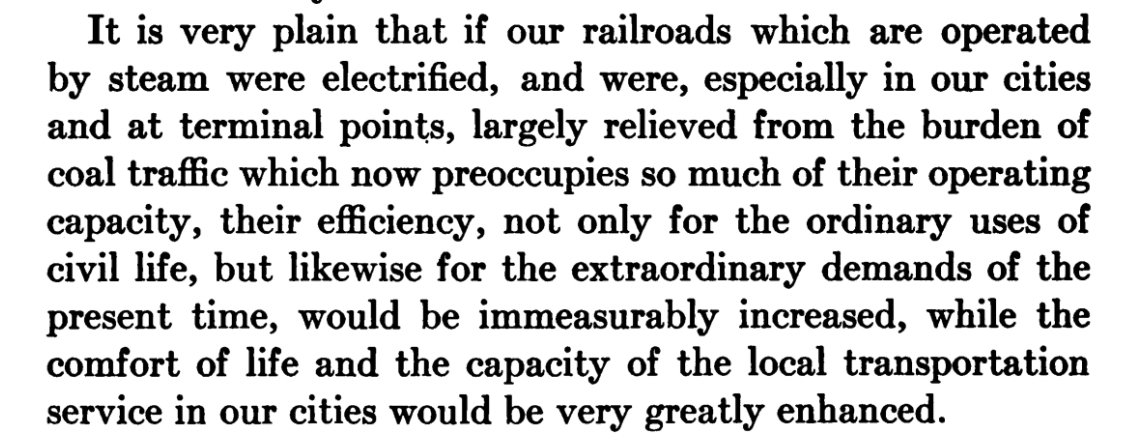
John Woodhead of Kansas City is here (short trip). He is described briefly here as a local insurance man and public servant books.google.com/books?id=mwIwA…


Woodhead notes that railroad and industrial smoke can be managed, but residential smoke appears to be an unsolvable problem in 1917 

E. Garrick O'Bryan of Pittsburgh is here. One 1908 directory calls him "salesman" and I see him as an active Real Estate Man here books.google.com/books?id=w9FOA…


Pittsburgh is addressing this problem in two ways: by employing "stokers" to keep smaller fires burning with less smoke, and by rolling out more efficient district heating systems downtown managed by "public service corporations" 

Crawford suggests reading the recent report on this subject from @carnegiemellon posted here: archive.org/details/smokei…


Delbert James Haff of Kansas City is here. He is recorded by @kclibrary as the author of KC's innovative Park Law and a City Beautiful innovator kchistory.org/islandora/obje…


Haff paints a pretty grim picture of the smoke problem in KC, comparing its cost to an annual tax. He thinks the city should have demanded electrification before the steam infrastructure went in: "constant cloud of smoke" 
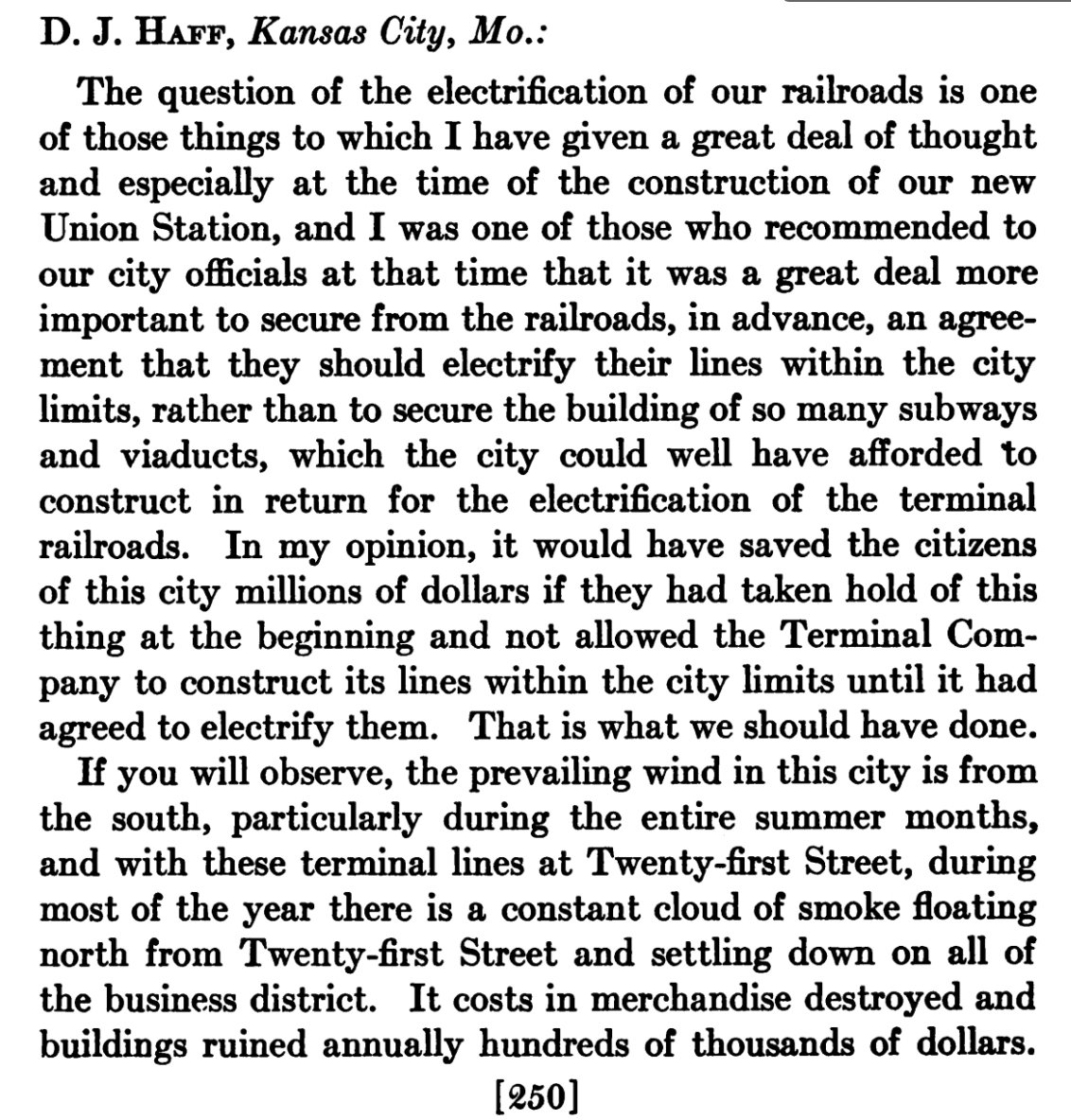
I don't fully follow Haff's argument, but I think he's saying that taxes should not cover transportation costs, that would be socialism, but the postal service is not socialism, because it's an educational service 

George B. Ford of NYC is here. The @nytimes records him as an architect and director of @RegionalPlan nytimes.com/1930/08/15/arc…
Ford points out that electrifying trains allows them to be put underground and the land above to be put to good use "created out of whole cloth", with potentially huge public and private value 

Aw, he's very short, just talks about the two interurban stations in LA and the need to run a subway between them. LA's first terminal was away from the business area, but the businesses spread out to reach it 

Damon likes stub end terminals fine as long as their capacity matches the need. Boston's only became problematic because it was too popular 

1917: Run transit "off grade" protected from street traffic, "part of the provision of the ultimate city"..."the problem of city planning" 

William J. Berkowitz of Kansas City is here. I can't quickly find a biography of him, but I see him speaking here at the Conference of Jewish Charities, where he lays out a quick history of charity in 6 year old KC books.google.com/books?id=uEtPA…


Attorney J A Harzfeld of KC is here. I see him noted as chairman of the Utilities Commission here google.com/books/edition/…


To decide where the KC terminal should go, they surveyed the interurban riders, who mainly wanted to get to the shopping area 

Adams is back to talk about implementing plans under budget: "the mere preparation of a plan is relatively unimportant" he dolefully intones to a room full of planners 

Adams is brutally frank here: In 1917 North American cities are failing to protect health and safety and pleading poverty to explain why. Not good enough. 

Adams thinks the police power can be used to regulate land use without compensation to owners if there is a clear health risk being addressed, but thinks national legislation is needed to map all this out 

Adams argues that setback requirements of all kinds should be legal if they have a clear public purpose and are recommended by "an expert planning department"
Wrapping up, Adams argues that states should provide these services centrally but not force localities to spend any money they don't wish to "in the carrying out of a plan"
@threadreaderapp unroll
• • •
Missing some Tweet in this thread? You can try to
force a refresh
















